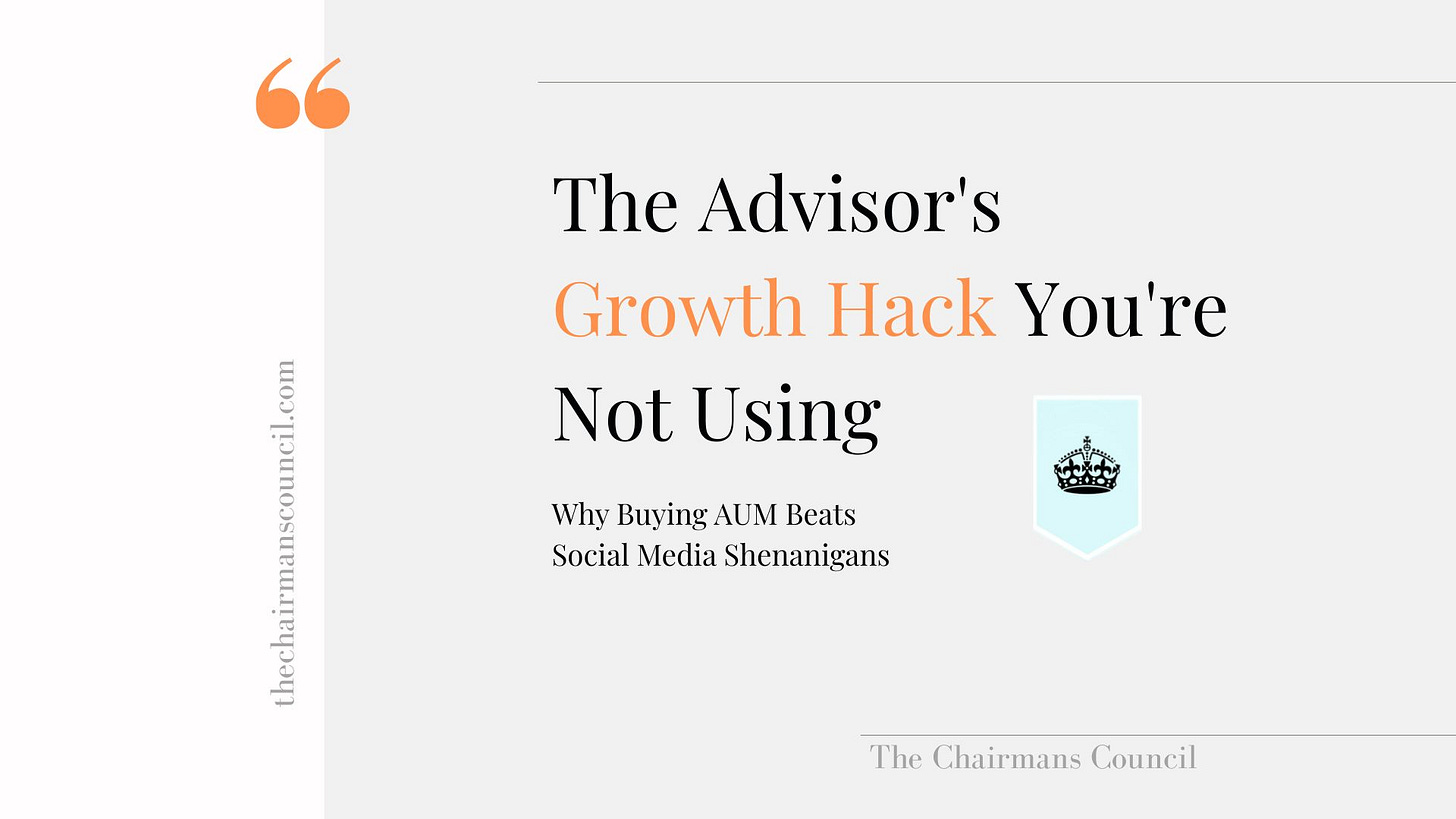The Advisor's Growth Hack You're Not Using
Why Buying AUM Beats Social Media Shenanigans
Let's face it – we've all done it. Sat through that webinar promising "10X Your Prospect List with LinkedIn," or shelled out for the "Ultimate Client Acquisition System" that ended up being about as useful as a chocolate teapot. All while watching our marketing budget bleed out faster than our enthusiasm.
Here's the uncomfortable truth: most financial advisors are absolutely terrible at marketing. There, I said it. We're brilliant at managing money, crafting thoughtful financial plans, and holding clients' hands through market turbulence – but ask us to create a viral TikTok or design a "customer journey" and suddenly we're all thumbs.
But what if I told you the most successful advisors in our industry aren't marketing wizards at all? In fact, they've completely sidestepped the marketing hamster wheel altogether.
The Changing of the Guards (And Why It's Your Golden Ticket)
There's a fascinating demographic shift happening in our industry that's creating what I can only describe as an arbi…


